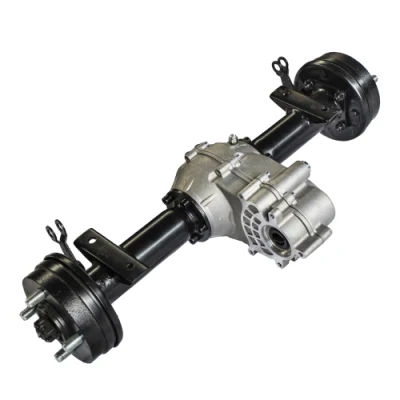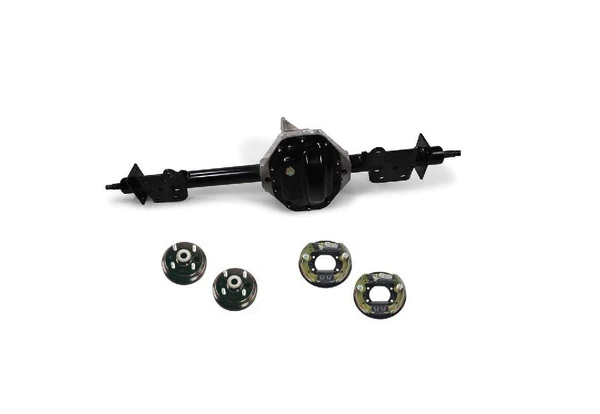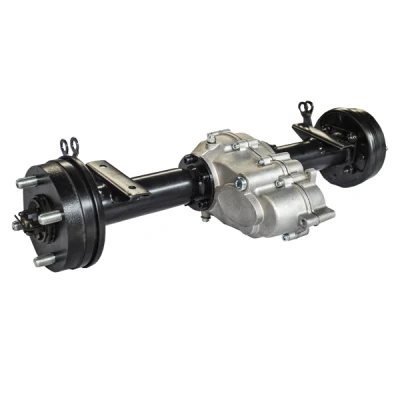Product Description
Product Description
Product Parameters
Certifications
Packaging & Shipping
Company Profile
ZheJiang CHINAMFG Metal Co., Ltd. is located in HangZhou, ZheJiang Province,which is founded in 2571.
Mainly engaged in the production and sales of auto parts. For the automobile after-sales maintenance market to provide a complete variety of high-quality parts products, the annual sales of 30 million US dollars, the products are exported to the United States, Europe, Russia, Southeast Asia, the Middle East and other dozens of countries and regions, enjoy a high reputation in the domestic and foreign markets.
It can provide professional solutions and is a trusted supplier in the automotive aftermarket. The company has passed the "three system" certification of quality, environment and occupational health and safety. Scientific management system, first-class production testing equipment, exquisite technology to ensure product quality.
FAQ
Q1: How many the MOQ of your company?
A: Our company MOQ is 1pcs.
Q2: Could you accept OEM and customize?
A:YES, we can customize for you according to sample or drawing.
Q3: Could you supply sample for free?
A: Yes, we can supply sample for free, but need our customer afford freight.
Q4 : Does your factory have CE?
A: Yes, we have ISO 9001:2008, and SASO. If you want other CE, we can do for you.
Q5: Is it your company is factory or Trade Company?
A: We have our own factory; our type is factory + trade.
Q6: What time the guarantee of your bearing quality guarantee period?
A: 6 months ,Customer need supply photos and send bearing back.
Q7: Could you tell me the payment term of your company can accept?
A: T/T, Western Union, PayPal, T/T, L/C.
Q8: Could you tell me the delivery time of your goods?
A: 7-15 days , mostly base on your order quantity.
/* January 22, 2571 19:08:37 */!function(){function s(e,r){var a,o={};try{e&&e.split(",").forEach(function(e,t){e&&(a=e.match(/(.*?):(.*)$/))&&1
| After-sales Service: | Replacement Service |
|---|---|
| Warranty: | 12 Months |
| Type: | Wheel Hub Bearing |
| Material: | Chrome Steel |
| Tolerance: | P0 |
| Certification: | ISO9001 |
| Samples: |
US$ 35/Piece
1 Piece(Min.Order) | |
|---|
| Customization: |
Available
|
|
|---|

How do electronic or computer-controlled rear differentials enhance vehicle performance?
Electronic or computer-controlled rear differentials offer several advantages that enhance vehicle performance in terms of traction, stability, and handling. These advanced differentials utilize electronic sensors, actuators, and control systems to actively monitor driving conditions and adjust torque distribution between the rear wheels. Here's a detailed explanation of how electronic or computer-controlled rear differentials enhance vehicle performance:
- Improved Traction:
- Enhanced Stability:
- Optimized Handling:
- Adaptive Response:
- Customizable Driving Modes:
- Integration with Vehicle Stability Systems:
Electronic or computer-controlled rear differentials can enhance traction by continuously monitoring wheel slip and redistributing torque accordingly. When one wheel starts to lose traction, the system can transfer more torque to the wheel with better grip. This active torque distribution helps to maximize traction on slippery or uneven surfaces, allowing the vehicle to maintain forward momentum and minimizing the risk of wheel spin.
By actively managing torque distribution, electronic or computer-controlled rear differentials contribute to improved stability during various driving maneuvers. These differentials can quickly detect and respond to situations where the vehicle may be at risk of oversteering or understeering. By selectively applying torque to the appropriate rear wheel, they help maintain balance and control, reducing the chances of skidding or loss of control.
Electronic or computer-controlled rear differentials can optimize handling characteristics by continuously adjusting torque distribution based on driving conditions. They can provide torque vectoring capabilities, where the system can independently vary the amount of torque sent to each rear wheel. By selectively applying torque to the outer or inner wheel during cornering, these differentials can enhance agility, responsiveness, and stability, resulting in improved handling performance.
One of the significant advantages of electronic or computer-controlled rear differentials is their adaptive response to changing driving conditions. The control system can analyze various inputs, such as wheel speed, steering angle, throttle position, and vehicle dynamics, and adjust torque distribution in real-time. This adaptability allows the differential to optimize performance based on factors like acceleration, deceleration, cornering forces, and road surface conditions.
Many vehicles equipped with electronic or computer-controlled rear differentials offer customizable driving modes. These modes allow drivers to select different performance settings that adjust the behavior of the differential and other vehicle systems. For example, a sport or performance mode may provide more aggressive torque distribution for spirited driving, while a comfort or eco mode may prioritize fuel efficiency and stability. This customization allows drivers to tailor the vehicle's performance characteristics to their preferences and driving style.
Electronic or computer-controlled rear differentials are often integrated with other vehicle stability systems, such as electronic stability control (ESC) or traction control systems (TCS). This integration allows for seamless coordination between these systems, enhancing overall vehicle stability and safety. The differential can work in tandem with ESC and TCS to provide precise torque distribution and intervention when needed, ensuring optimal traction, stability, and control in challenging driving conditions.
In summary, electronic or computer-controlled rear differentials enhance vehicle performance by improving traction, enhancing stability, optimizing handling, providing adaptive response, offering customizable driving modes, and integrating with vehicle stability systems. These advanced differentials utilize electronic sensors and control systems to actively monitor and adjust torque distribution, resulting in enhanced traction, agility, and control in various driving situations.

How do off-road vehicles benefit from specialized rear differentials, such as locking differentials?
Off-road vehicles can greatly benefit from specialized rear differentials, particularly locking differentials, due to the unique challenges and demands of off-road terrain. These specialized differentials enhance traction, improve off-road performance, and increase the vehicle's capability to navigate challenging conditions. Here's a detailed explanation of the benefits of specialized rear differentials, such as locking differentials, for off-road vehicles:
- Improved Traction:
- Enhanced Off-Road Performance:
- Increased Wheel Power:
- Greater Mobility:
- Reduced Stuck Situations:
- Driver Control:
Off-road terrain often presents uneven surfaces, loose soil, rocks, mud, or slippery conditions, which can result in wheels losing traction. Locking differentials provide enhanced traction by mechanically locking the two drive wheels together, ensuring they rotate at the same speed. This prevents power from being diverted to the wheel with less traction and maximizes power delivery to both wheels, allowing the vehicle to maintain forward momentum and overcome obstacles more effectively.
Specialized rear differentials, such as locking differentials, enhance the off-road performance of vehicles. By improving traction, locking differentials enable vehicles to tackle steep inclines, climb over obstacles, and traverse challenging terrains that would otherwise be difficult or impossible to navigate. The increased power distribution to both wheels significantly reduces the risk of wheelspin, allowing the vehicle to maintain control and stability in demanding off-road conditions.
Locking differentials distribute power equally to both wheels, ensuring that each wheel receives adequate torque. This increased power to the wheels enables off-road vehicles to overcome resistance encountered during off-road driving, such as deep mud, sand, or steep inclines. The balanced power distribution allows the vehicle to effectively transfer power to the wheels with traction, maximizing the vehicle's capability to traverse challenging terrain.
Specialized rear differentials, like locking differentials, provide off-road vehicles with greater mobility. By preventing one wheel from spinning freely, locking differentials allow both wheels to maintain continuous power delivery. This significantly improves the vehicle's ability to navigate through uneven or slippery surfaces, deep ruts, or off-camber terrain. The increased mobility provided by locking differentials ensures that off-road vehicles can tackle a wider range of obstacles and terrains with confidence.
Off-road vehicles equipped with locking differentials are less prone to getting stuck in challenging off-road conditions. When one wheel loses traction and starts spinning, a locking differential ensures that power is redirected to the wheel with grip, preventing the vehicle from becoming immobilized. By reducing the likelihood of getting stuck, locking differentials enhance the vehicle's capability to handle extreme off-road situations and provide drivers with increased confidence and peace of mind.
Locking differentials offer off-road drivers increased control over their vehicles. By providing consistent power delivery to both wheels, locking differentials enhance the vehicle's overall stability and handling in off-road environments. This allows drivers to maneuver through obstacles, maintain better control during descents or ascents, and make precise adjustments to overcome challenging terrain features. The improved control provided by locking differentials contributes to a safer and more enjoyable off-road driving experience.
In summary, specialized rear differentials, such as locking differentials, offer significant benefits to off-road vehicles. These differentials improve traction, enhance off-road performance, increase wheel power, provide greater mobility, reduce the likelihood of getting stuck, and offer better driver control. By equipping off-road vehicles with locking differentials, drivers can confidently navigate challenging terrains and overcome obstacles, expanding the vehicle's capabilities and unlocking new off-road adventures.

How does a limited-slip rear differential differ from an open rear differential?
A limited-slip rear differential and an open rear differential are two different types of differentials commonly used in vehicles. They differ in their design and operation, resulting in distinct performance characteristics. Here's a detailed explanation of how a limited-slip rear differential differs from an open rear differential:
- Design:
An open rear differential, also known as a conventional or standard differential, consists of a set of gears that allow the rear wheels to rotate at different speeds. It relies on the path of least resistance, transmitting torque to the wheel with the least traction. In contrast, a limited-slip rear differential incorporates additional components, such as clutch packs, viscous couplings, or gear mechanisms, to actively distribute torque between the rear wheels.
- Torque Distribution:
One of the primary differences between the two differentials is how they distribute torque to the rear wheels. In an open rear differential, torque is primarily sent to the wheel with the least traction. This means that if one wheel encounters low traction or slips, the majority of the torque will be transferred to that wheel, potentially resulting in reduced traction and power delivery to the opposite wheel.
A limited-slip rear differential, on the other hand, is designed to distribute torque more evenly between the rear wheels. It actively senses the difference in rotational speed between the wheels and applies torque to the wheel with better traction. This helps to maximize traction and power delivery, especially in situations where one wheel encounters reduced grip, such as during cornering or on slippery surfaces.
- Performance and Traction:
The difference in torque distribution results in varying performance characteristics. An open rear differential is generally more prone to wheel spin or loss of traction since torque is directed to the wheel with the least resistance. This can be a disadvantage in situations where maximum traction is required, such as when driving on uneven terrain, in off-road conditions, or during aggressive acceleration.
A limited-slip rear differential provides improved traction and performance by actively transferring torque to the wheel with better grip. This helps to minimize wheel spin, enhance stability, and improve overall power delivery. The limited-slip design allows for better control during cornering, as it reduces the tendency for the inside wheel to lose traction and slip, providing better stability and handling characteristics.
- Applications:
Due to their performance characteristics, open rear differentials are commonly found in standard passenger vehicles that prioritize simplicity, cost-effectiveness, and fuel efficiency. They are suitable for regular driving conditions where maximum traction is not a critical requirement.
Limited-slip rear differentials are frequently utilized in high-performance vehicles, sports cars, and off-road vehicles, where improved traction and power delivery are essential. They are designed to enhance performance during aggressive acceleration, high-speed cornering, or challenging terrain. Limited-slip differentials are also beneficial in areas with inclement weather conditions where maintaining traction is crucial.
In summary, a limited-slip rear differential differs from an open rear differential in its design, torque distribution, performance, and applications. While an open differential provides a simple and cost-effective solution for regular driving conditions, a limited-slip differential actively distributes torque to enhance traction, stability, and power delivery, making it suitable for high-performance and off-road applications where maximum grip is required.


editor by CX 2024-04-16